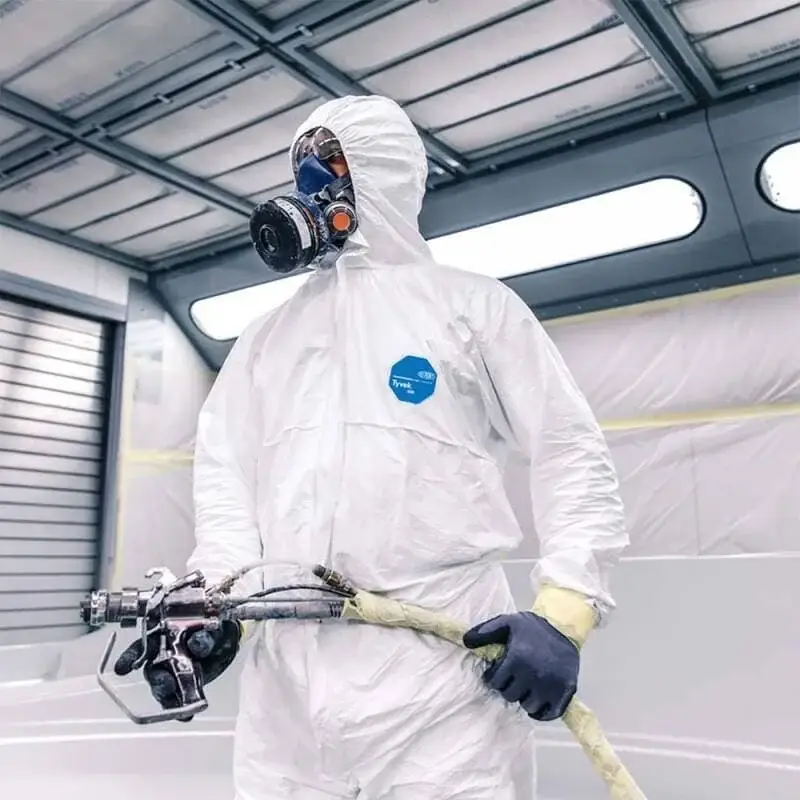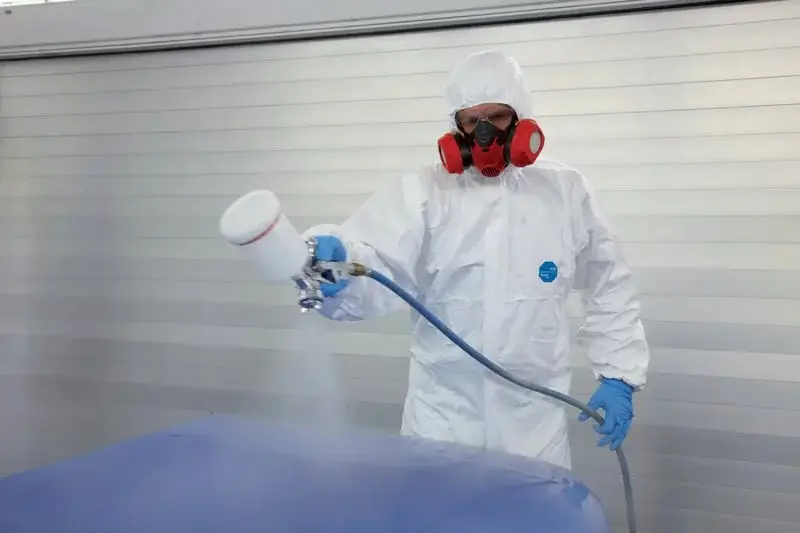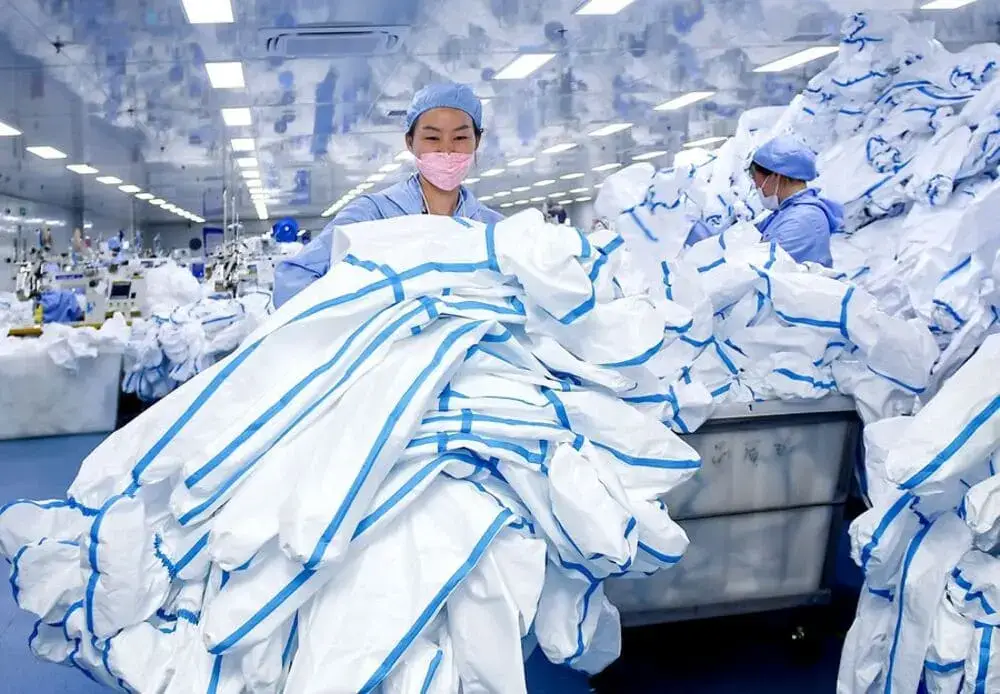Table of Contents
Disposable lab coats play a crucial role in medicine, research labs, and food service industries. These single-use coats provide an effective barrier against contamination without the hassle of washing or sterilizing. Whether you’re working in a hospital, testing samples in a laboratory, or handling food in a commercial kitchen, choosing the right disposable coat is important for safety and hygiene. This article will help you understand what to look for when selecting disposable laboratory gowns for your specific needs.
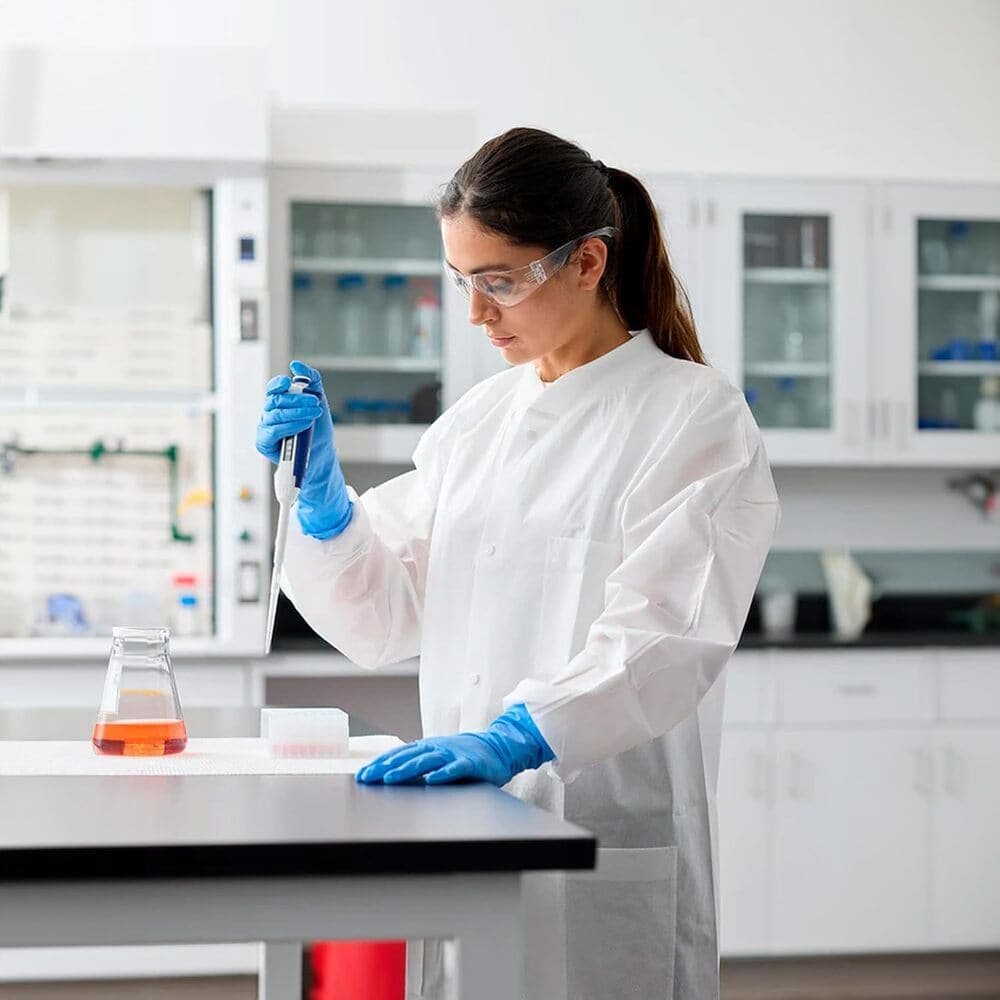
What Are Disposable Lab Coats?
Disposable lab coats are single-use protective clothing for professionals in medical, industrial, and lab environments, they are also called disposable doctor coats, disposable white coats or disposable lab jackets.
Made from non woven materials like polypropylene, SMS, and microporous fabric, disposable laboratory coats are designed to be lightweight and breathable while providing a barrier against contaminants.
Disposable laboratory coats are used in settings that demand high hygiene or involve chemical exposure. Disposable lab coats protect professionals from harmful substances while keeping personal clothes clean.
What are disposable lab coats made of?
Disposable lab coats are made from various materials, each with unique benefits. Here’s a look at the most common types and their features.

Polypropylene Lab coat
Polypropylene, or PP, is a lightweight, non-woven material often used for disposable lab coats.
-
Comfort: PP is very breathable, making it comfortable even for long wear. It’s also latex-free, so it’s safe for those with latex allergies.
-
Available in Different Thicknesses: PP coats come in various thicknesses, like 35 GSM or 40 GSM. GSM, or grams per square meter, shows the thickness and durability of the material. A 40 GSM coat, for example, is more durable than a 35 GSM coat, making it better for longer use.
-
Affordable and Effective: With good durability and low cost, PP is ideal for less demanding settings. It offers a strong balance of function and affordability.

SMS Lab coat
SMS is a three-layer material: spun bonded polypropylene on the outer and inner layers, with melt blown polypropylene in the center.
-
Strong and Resistant: This structure makes SMS lab coats resistant to tears, punctures, and penetration—qualities that suit lab and cleanroom environments.
-
Protective: The unique layers create a barrier against particles and some fluids, making it a solid choice for areas needing protective barriers.
-
Common in Labs: SMS lab coats are often used in labs and cleanrooms due to their durability and protective qualities. They provide extra protection without sacrificing comfort.

Microporous Lab coat
Microporous film is a specialized material offering a mix of protection and breathability.
-
Barrier and Breathability: It blocks particles and low-hazard splashes while allowing water vapor to pass through, keeping users comfortable.
-
Suitable for Cleanrooms: These lab coats can be sterilized through Gamma Irradiation and meet ISO 5 EU GMP Grade A standards, which makes them suitable for high-level cleanroom applications.
-
Comfortable for Long Wear: With breathable and protective properties, microporous film is perfect for settings requiring long wear times without sacrificing safety.
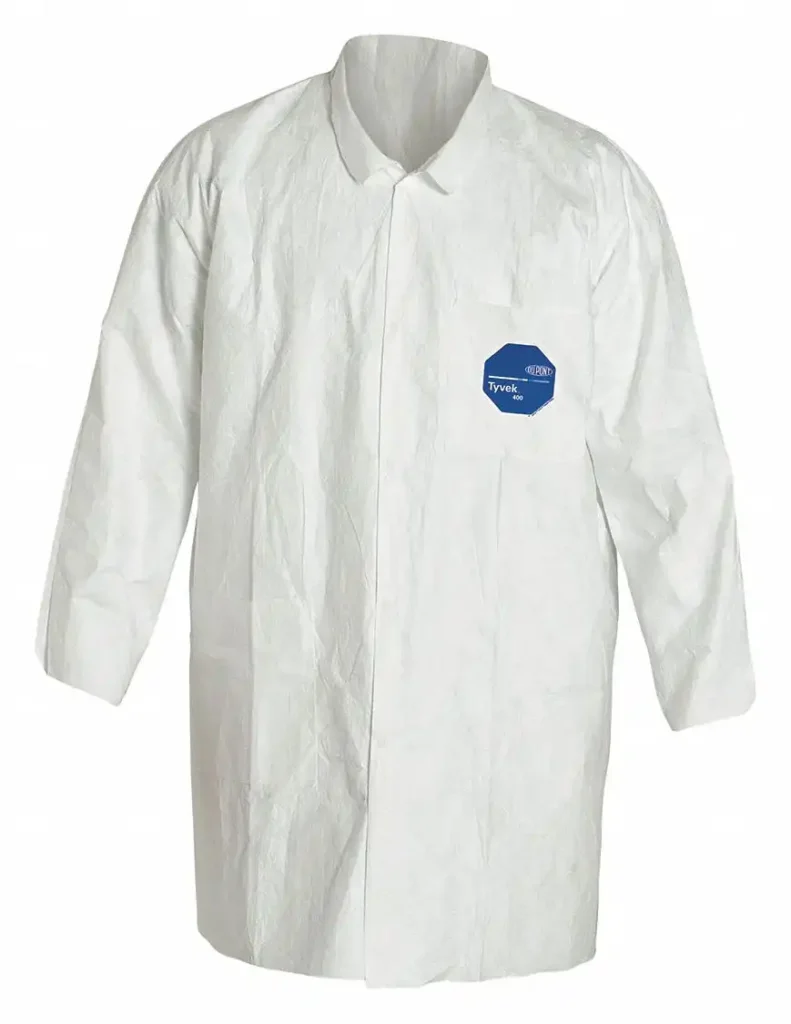
Tyvek Lab coat
DuPont’s Tyvek is known for high-level protection against chemicals and biological agents.
-
High Protection: Tyvek coats resist chemicals, dust, and biological hazards, making them ideal for critical safety environments.
-
Higher Cost: Though pricier than other disposable options, Tyvek coats offer unmatched durability and protection, making them preferred in high-risk areas.
Comparing Properties of the 4 Materials
|
Material |
Durability |
Breathability |
Fluid Resistance |
|
PP (Polypropylene) |
Moderate |
High |
Low |
|
SMS |
High |
Moderate |
Moderate |
|
Microporous Film |
Moderate-High |
High |
High |
|
Tyvek |
Very High |
Moderate |
Very High |
Each material type has advantages for specific uses. For economical daily protection, PP lab coats are ideal. For higher resistance to wear and punctures, SMS is a great choice. In high-cleanroom environments, microporous film laboratory coats excel. If hazardous conditions were at hand, Tyvek would be your expected material.

Features and Designs of Disposable Lab Coats
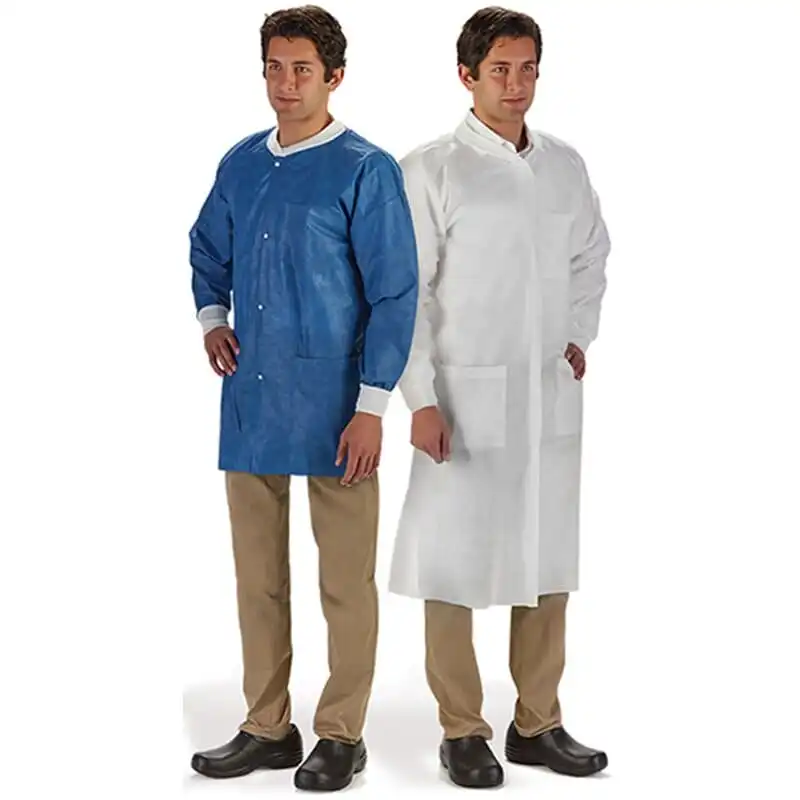
Length and Coverage
Longer lab coats offer more protection by covering the legs down to the knees or beyond, making them suitable for environments with higher splash or contamination risks.
Shorter lab coats, however, are more comfortable and easier to move in, which is helpful in laboratories that require flexibility. The key is to find a balance between comfort and protection, especially in fast-paced or high-containment settings.
Main Colors
White is the most commonly chosen color of disposable lab gowns, due to its clean appearance and ability to reveal dirt or contaminants quickly.
Blue and yellow lab coats are also used, especially in healthcare or specialized labs, to indicate different safety levels or access permissions. A quick scan of coat colors helps personnel recognize restricted areas and improves safety procedures.
Closure Types
-
Zip Closure: Provides a secure seal, minimizing the risk of contaminants entering or escaping. It is ideal for high-risk environments where containment is essential.
-
Velcro Closure: Velcro is also known as hook-and-loop fastener. Offers quick and easy fastening, even when wearing gloves. Though less airtight than zippers, it’s suitable for labs where speed is a priority.
-
Snap Front: Common in lab coats, snap closures are convenient for settings where coats are frequently changed. They provide secure fastening with minimal effort, ideal for cleanroom environments.
Cuff Style
- Elastic Cuffs: Elastic wrists ensure a snug fit, preventing sleeves from catching on equipment or becoming contaminated. Disposable lab jackets with elastic cuffs are often used in labs where precision work is required.
- Knit Cuffs: Offer more flexibility and comfort than elastic cuffs, reducing the chance of tearing during frequent arm movements.
Collar Type
-
Shirt Collar: A standard option, providing a simple, comfortable fit.
-
Knitted Collar: Enhances comfort while reducing the chance of loose threads, making it useful in labs focused on cleanliness and sterility.
Pocket Options
-
No Pockets: Preferred in cleanrooms to reduce contamination risks, as there are fewer places for contaminants to collect.
-
Multiple Pockets: Useful in research labs, allowing professionals to carry tools, notes, or instruments. These designs offer easy access to essentials, ensuring hands remain free to operate equipment efficiently.
The right disposable lab coat depends on your specific work environment and safety needs. From basic polypropylene coats for general use to high-protection Tyvek materials for hazardous environments, each type offers different levels of protection and comfort. Consider factors like material durability, fluid resistance, and design features such as closure types and pocket options.
Finding reliable disposable lab coats can be challenging—but we’re here to help. Check our range of disposable lab coats that meet high-quality standards for protection and comfort. Visit our website or contact us for personalized advice and orders.

